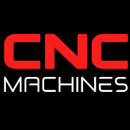The Impact of CNC Machining on the Aerospace Industry

The Impact of CNC Machining on the Aerospace Industry
The aerospace industry is characterized by its demand for high precision, stringent safety standards, and innovative manufacturing processes. CNC (Computer Numerical Control) machining has emerged as a cornerstone technology in aerospace manufacturing, enabling the production of complex components with unparalleled accuracy and efficiency. This article investigates how CNC machines are utilized in the aerospace sector, focusing on the precision components they produce, the materials used, and the overall benefits of CNC technology.
The Role of CNC Machining in Aerospace Manufacturing
CNC machining plays a vital role in various aspects of aerospace manufacturing, from prototyping to mass production. The technology enables manufacturers to create intricate and precise parts that meet the rigorous specifications of the aerospace industry.
Key Applications
- Structural Components: CNC machines are used to manufacture structural parts such as fuselages, wings, and tail sections. These components must adhere to strict weight and strength requirements.
- Engine Parts: Precision components like turbine blades, casings, and compressor components are produced using CNC machining, ensuring optimal performance and reliability.
- Interior Components: CNC technology is also employed in the fabrication of cabin interiors, including control panels, seating frames, and decorative elements, which must combine aesthetics with durability.
Precision Components in Aerospace
High Tolerances
CNC machining allows for the production of components with tolerances as tight as ±0.001 inches or less, which is critical in aerospace applications. This level of precision is essential for ensuring that parts fit correctly and function as intended, particularly in safety-critical systems.
Complex Geometries
Aerospace components often feature complex geometries that are challenging to produce with traditional machining methods. CNC machines can easily create intricate shapes, such as cooling channels in turbine blades or lattice structures in lightweight components.
Quality Assurance
CNC machining enables manufacturers to implement stringent quality control measures. Advanced inspection techniques, including laser scanning and coordinate measuring machines (CMM), can be integrated into the CNC workflow to verify part accuracy and consistency.
Materials Used in CNC Machining for Aerospace
The aerospace industry relies on a diverse range of materials, each chosen for its unique properties that meet the demands of flight. CNC machining is compatible with several high-performance materials:
Aluminum Alloys
Aluminum is a primary material in aerospace manufacturing due to its lightweight nature and high strength-to-weight ratio. CNC machines can efficiently cut and shape aluminum alloys to produce structural components and engine parts.
Titanium Alloys
Titanium offers exceptional strength and corrosion resistance, making it ideal for critical applications in aerospace. CNC machining allows for the precise fabrication of titanium parts, although it requires specialized tooling due to the material's toughness.
Composites
Advanced composite materials, such as carbon fiber-reinforced polymers (CFRP), are increasingly used in aerospace manufacturing. CNC machines equipped with specialized tooling can precisely cut and shape composite materials, enabling the production of lightweight yet strong components.
Benefits of CNC Technology in Aerospace
Increased Efficiency
CNC machining significantly reduces production time compared to traditional manufacturing methods. The ability to run machines continuously, combined with the automation of repetitive tasks, enhances overall productivity.
Cost Reduction
While the initial investment in CNC technology can be substantial, the long-term cost savings are notable. CNC machining minimizes material waste, reduces labor costs, and decreases the need for rework due to its high precision.
Enhanced Flexibility
CNC machines are highly versatile and can easily switch between different production tasks. This flexibility allows aerospace manufacturers to adapt quickly to changing demands, whether it be for new designs or increased production volumes.
Improved Safety
CNC technology reduces the risk of human error by automating complex machining processes. This automation enhances workplace safety by minimizing the need for operators to be in proximity to moving parts during machining.
Top 10 Aerospace Companies
The impact of CNC machining is evident in the operations of leading aerospace companies. Here are the top 10 aerospace companies known for their innovative practices and significant contributions to the industry:
- Boeing: A major player in commercial and military aircraft manufacturing.
- Airbus: Known for its wide range of commercial aircraft and aerospace systems.
- Lockheed Martin: Specializes in defense, aerospace, and advanced technologies.
- Northrop Grumman: A leader in aerospace and defense technology solutions.
- Raytheon Technologies: Focuses on aerospace systems and defense solutions.
- General Dynamics: Engages in aerospace manufacturing, including combat aircraft and support.
- Bombardier: Renowned for its business jets and regional aircraft.
- Honeywell Aerospace: Provides avionics, engines, and various aerospace products.
- Textron Aviation: Manufactures Cessna and Beechcraft aircraft.
- Rolls-Royce: Specializes in aircraft engines and propulsion systems.
Conclusion
CNC machining has a profound impact on the aerospace industry, enabling manufacturers to produce high-precision components that meet stringent safety and performance standards. The ability to work with a variety of materials, combined with the advantages of increased efficiency, cost reduction, and improved flexibility, positions CNC technology as an essential tool in aerospace manufacturing.
As the aerospace industry continues to evolve, embracing advancements in CNC technology will be crucial for maintaining competitiveness and meeting the growing demands of modern aviation. By leveraging the capabilities of CNC machines, manufacturers can not only enhance their production processes but also contribute to the development of safer, more efficient aircraft for the future.


